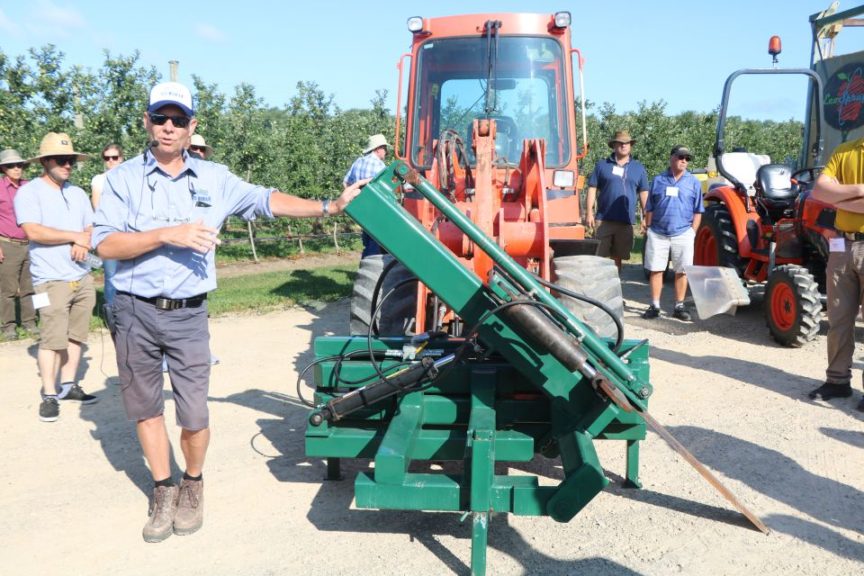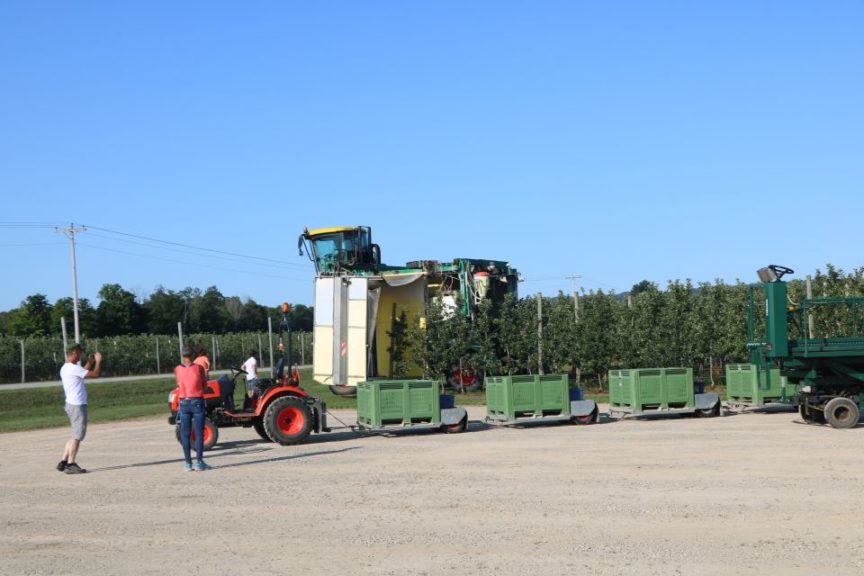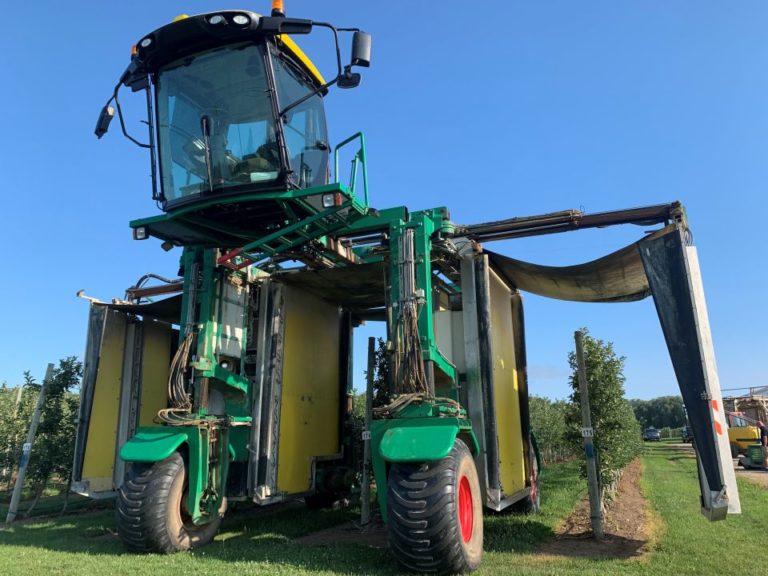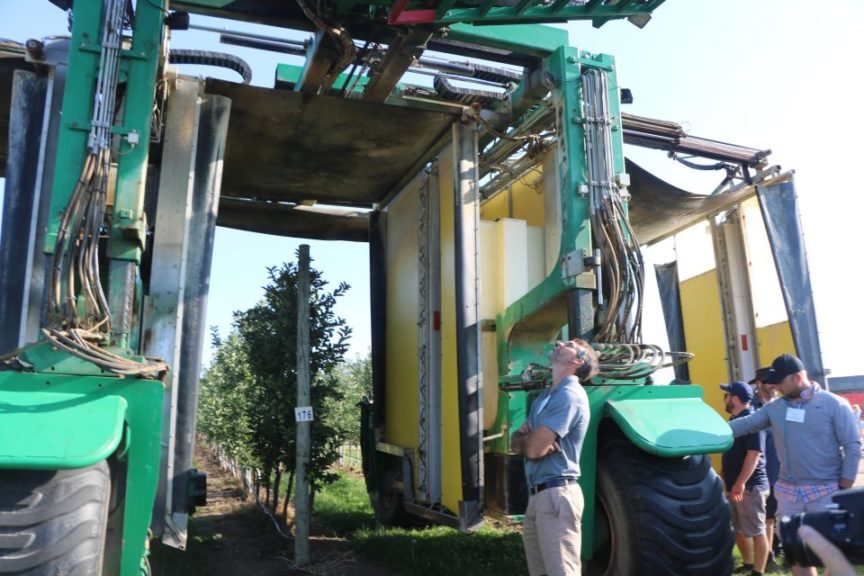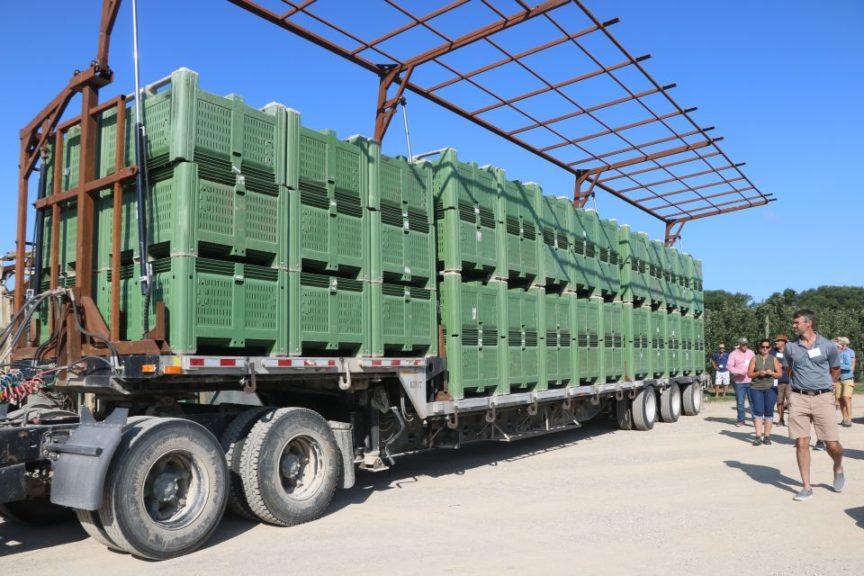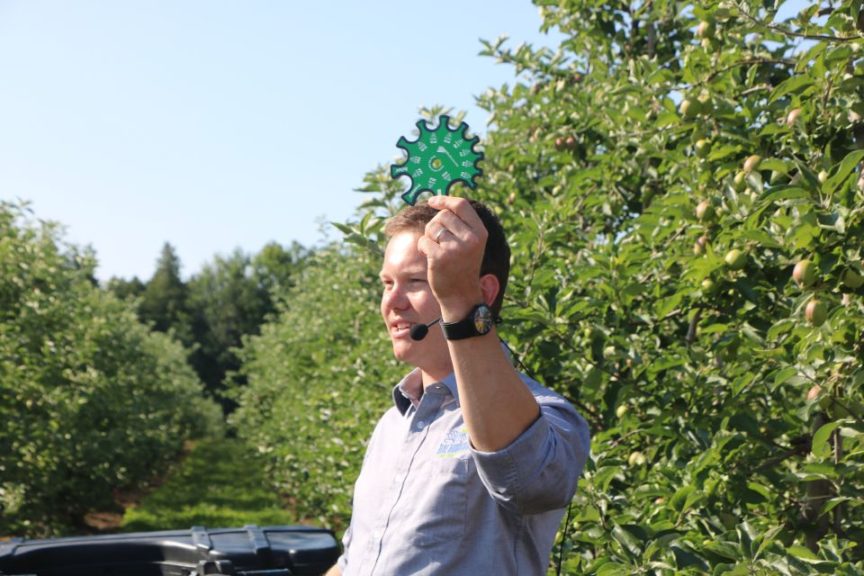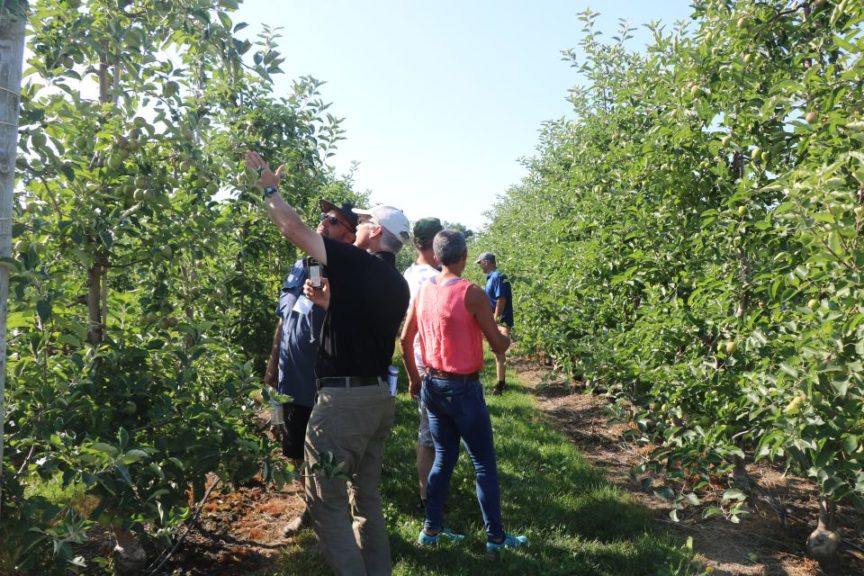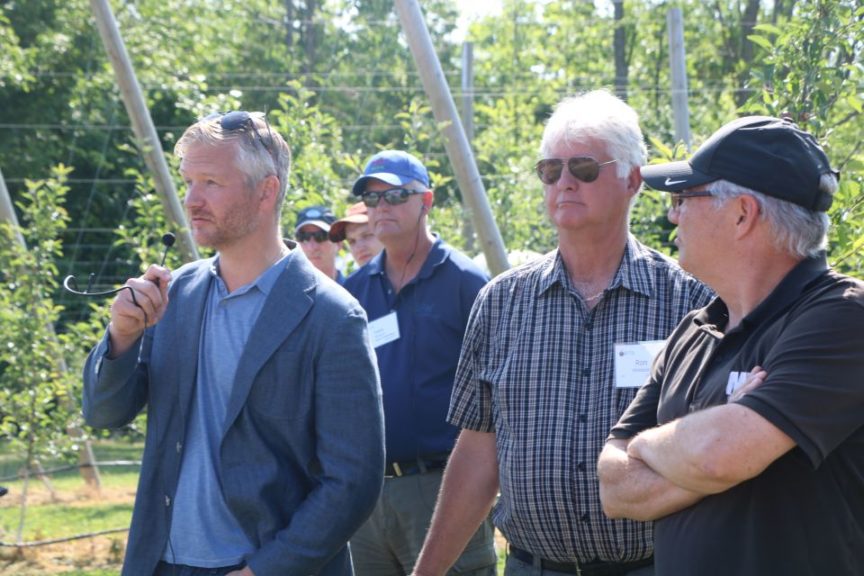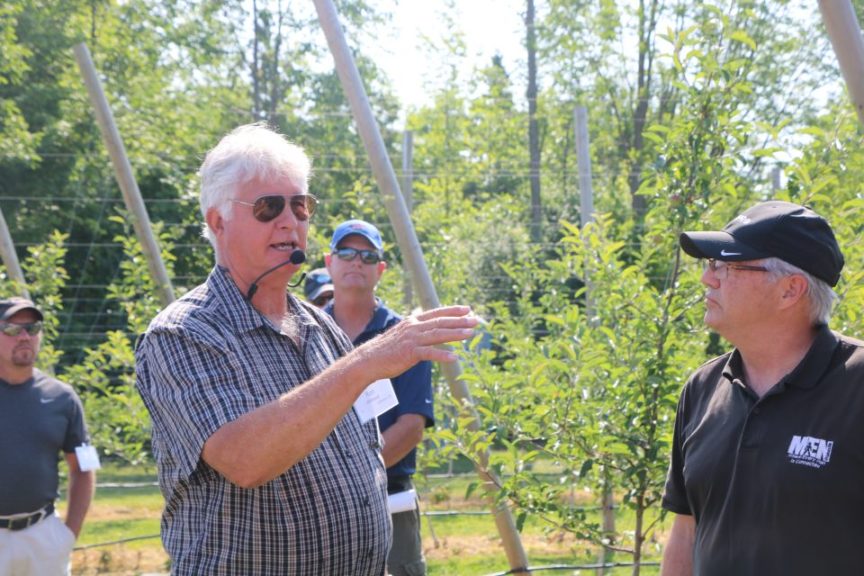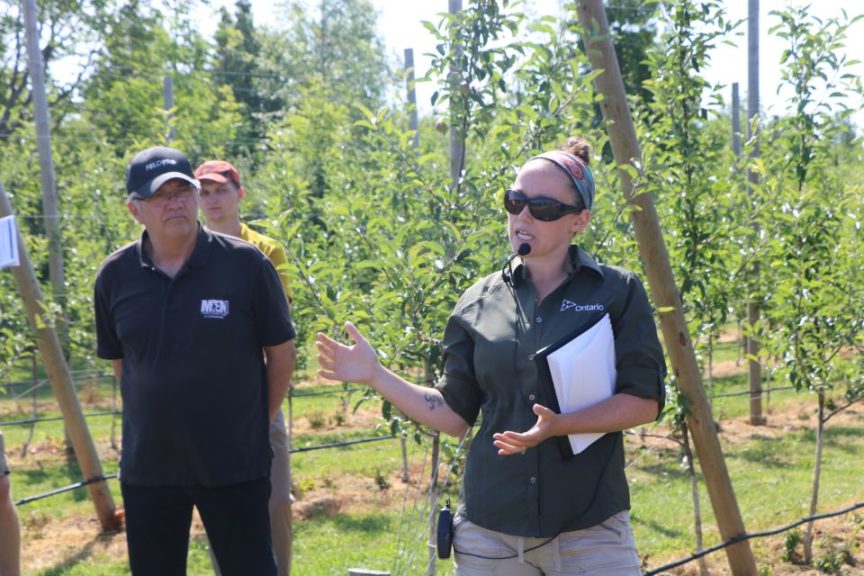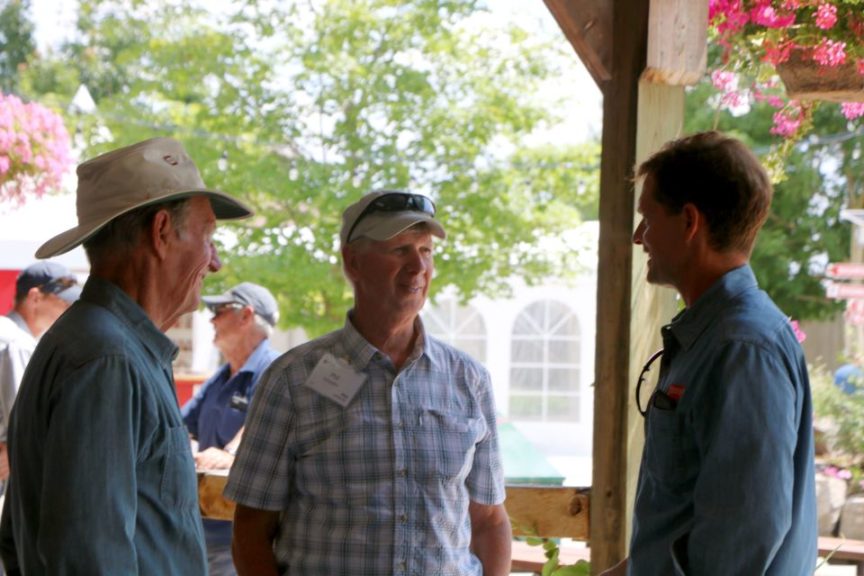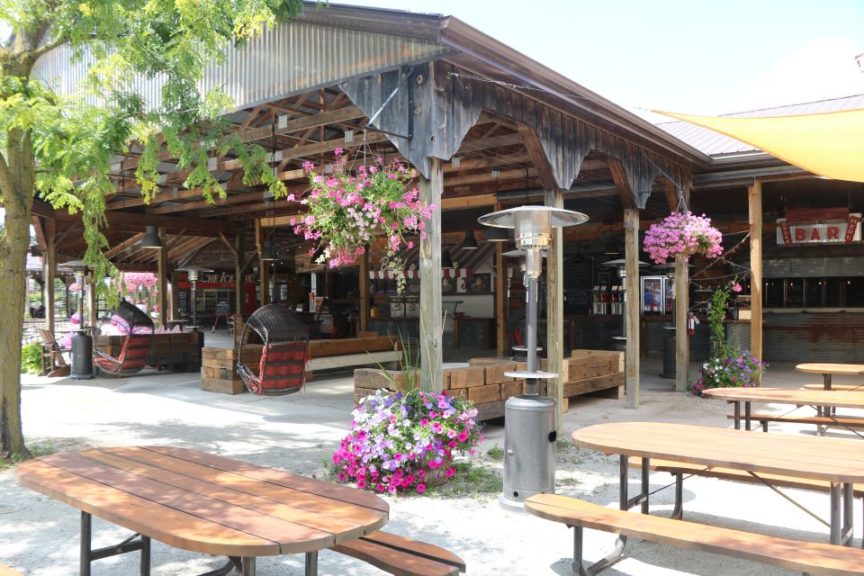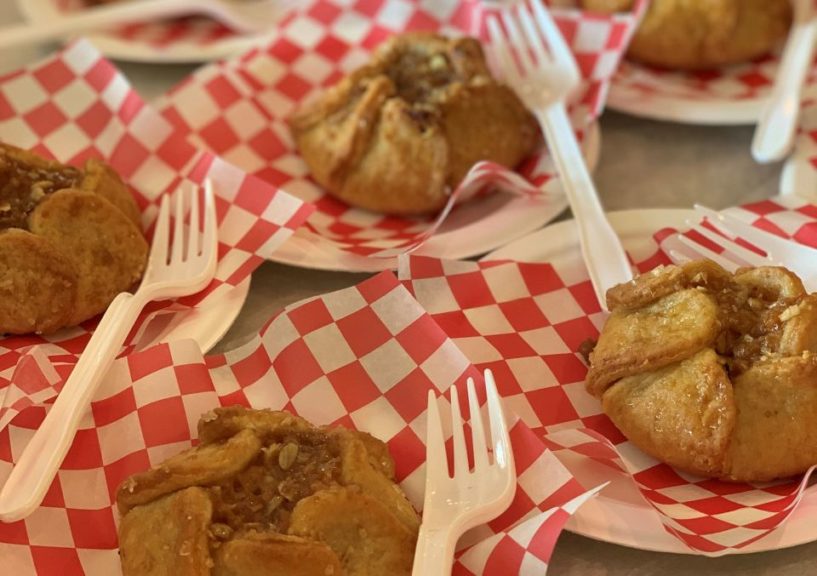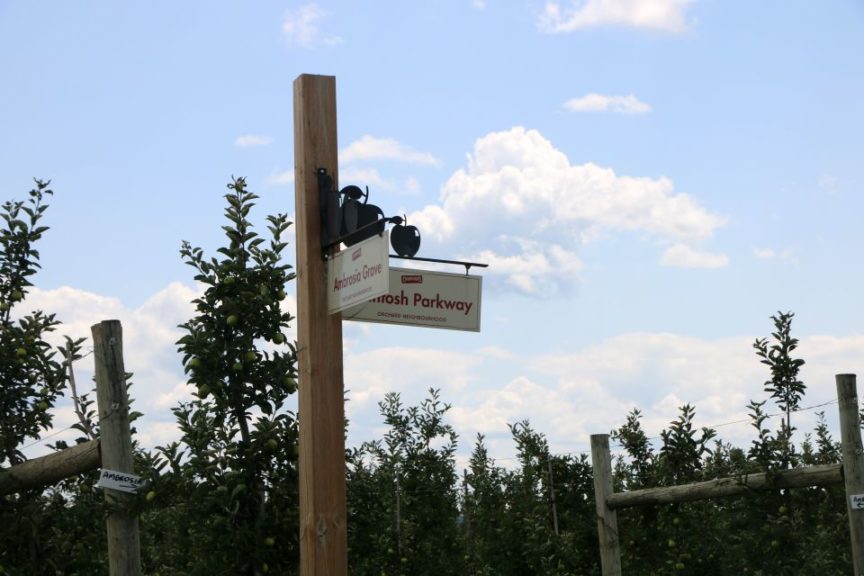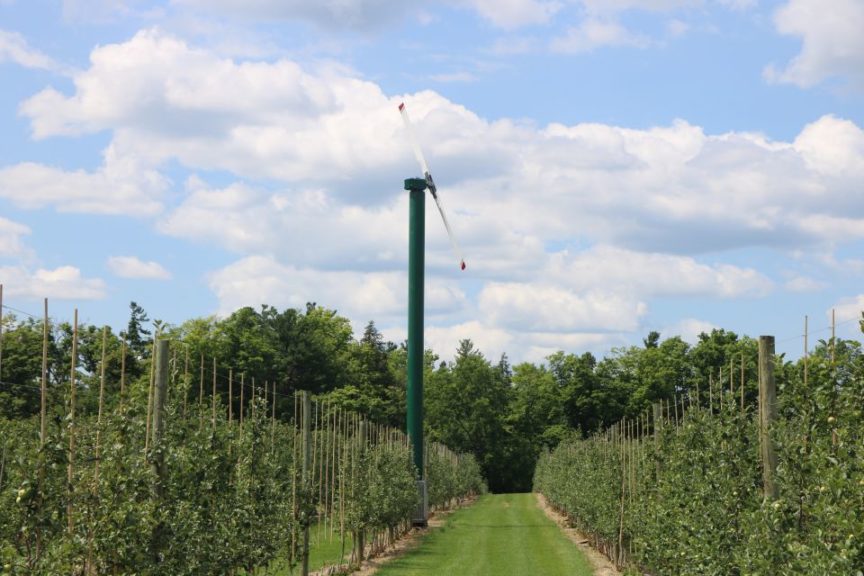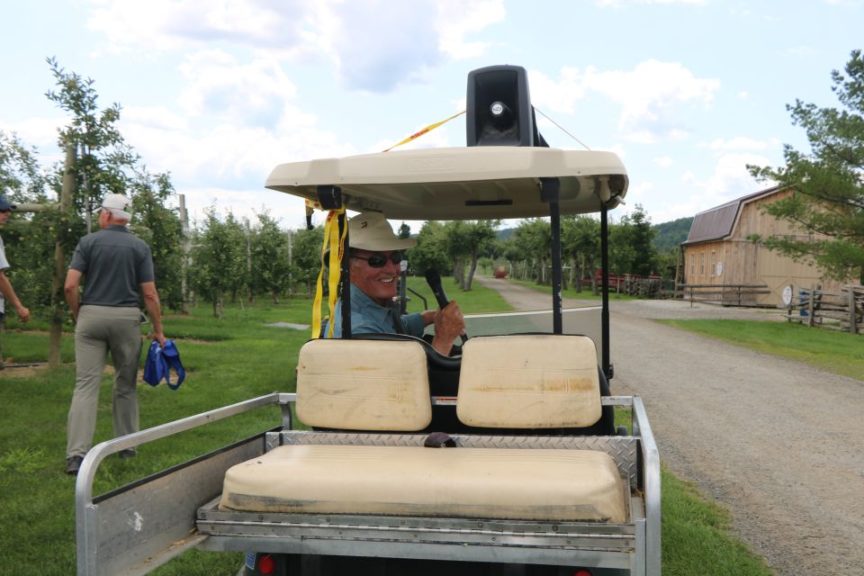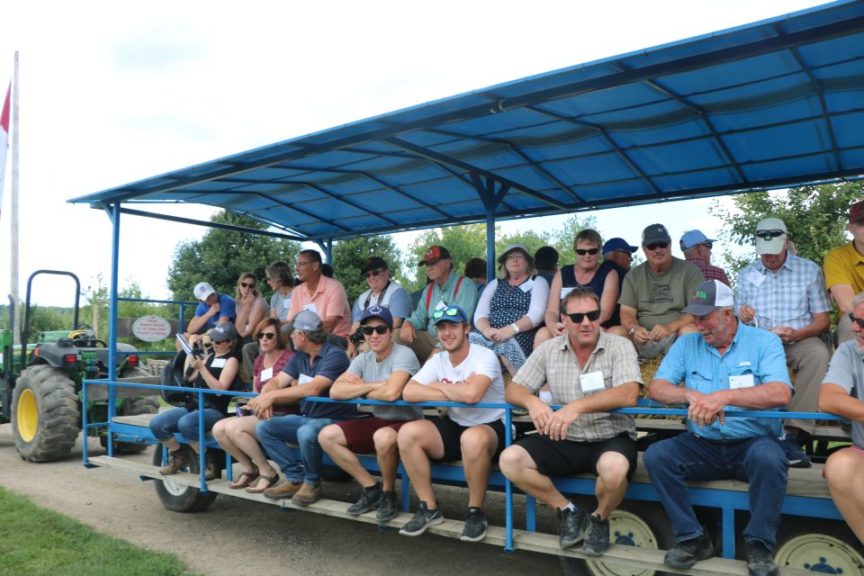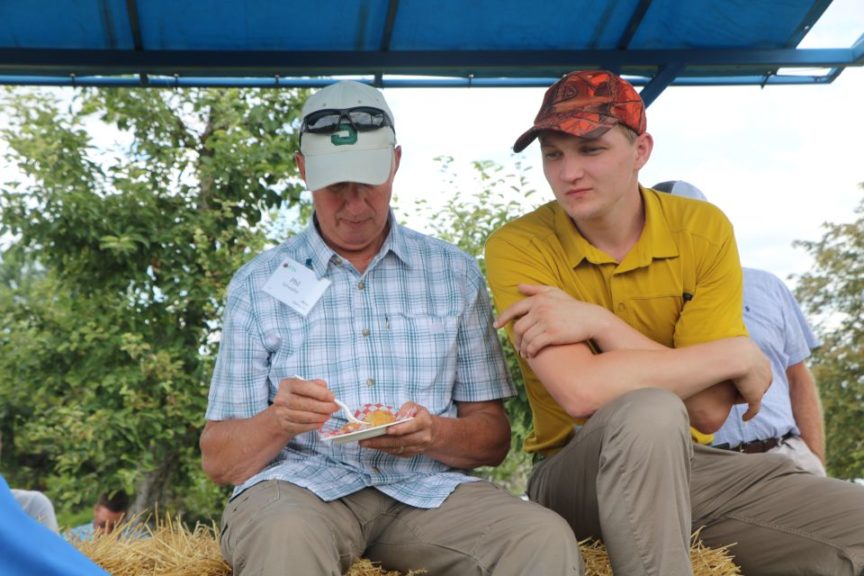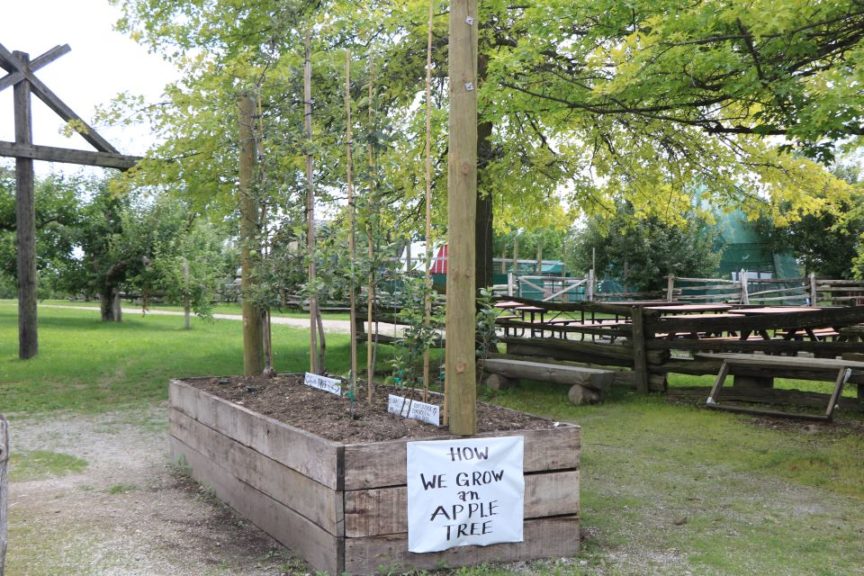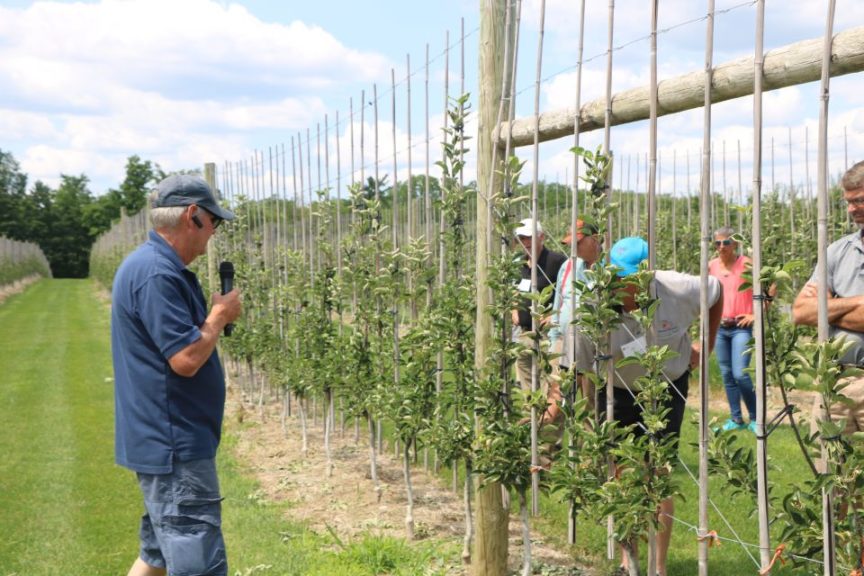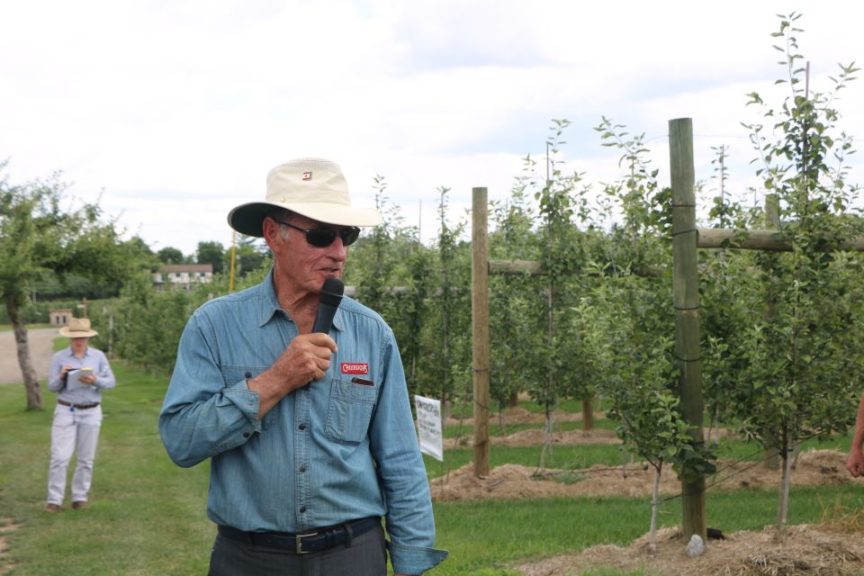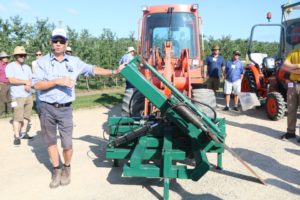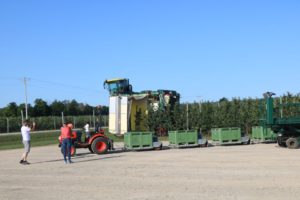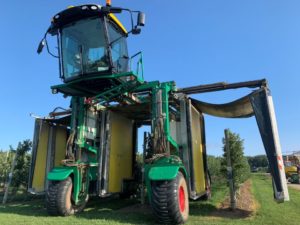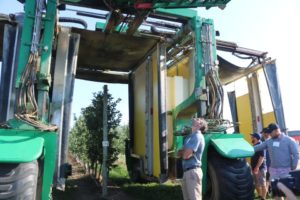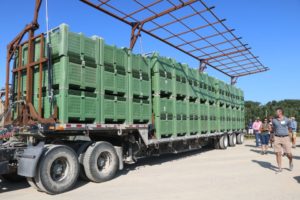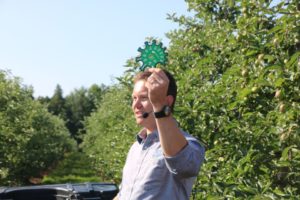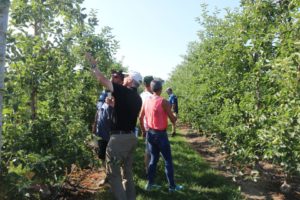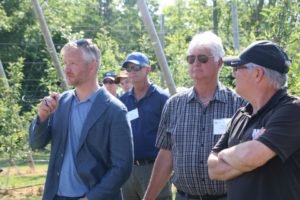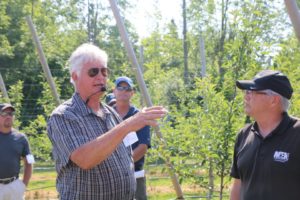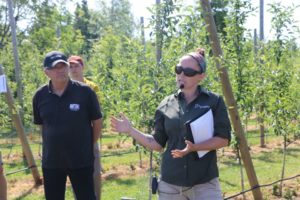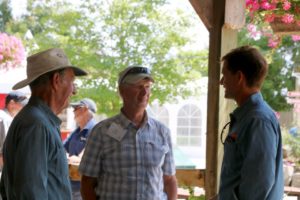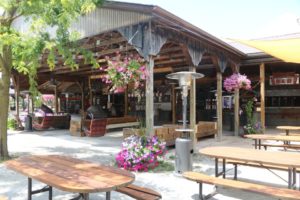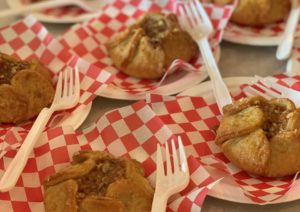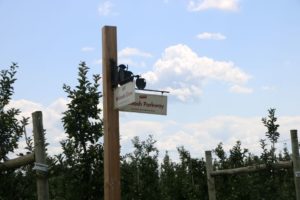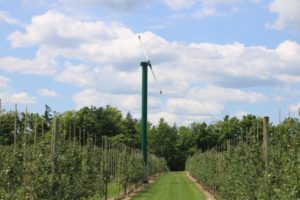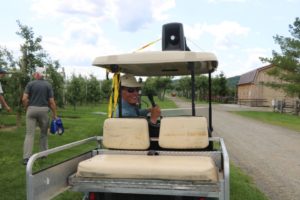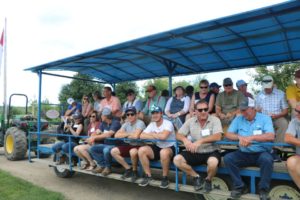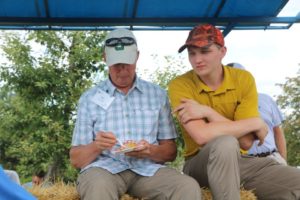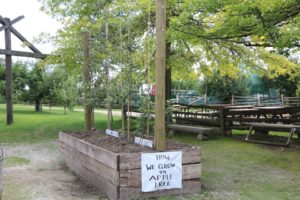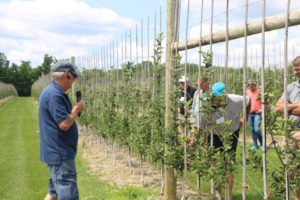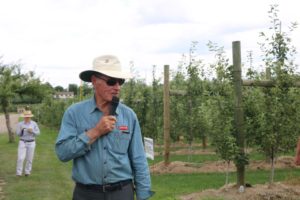How to Top Off 3 Epic Days of Tree Fruit Exploration
It was hard to miss the 4-row, over-the-row sprayer at Botden Orchards when the buses pulled up on the third day of the International Fruit Tree Association’s Ontario Summer Tour in Canada.
Marius Botden, a nurseryman who emigrated to Canada in 2001, says he had been eying the 4-row orchard sprayer and when a used one became available, he jumped at the opportunity to import it. The recycling sprayer can toggle between 4-wheel drive and 2-wheel drive. Botden says it saves him about 15% or 20% on materials a year.
“It’s a fairly heavy piece of equipment,” so Botden says the family doesn’t operate it in the spring when the ground is soft or on hills. It’s also quite tall and Marius says he doesn’t like heights so his son, Gerbe, is the one who operates it.
“I am afraid of heights, I haven’t been in the cab,” he says.
Gerbe says they can cover about 17 to 22 acres an hour and can spray about 25 gallons per acre. It also comes with a mower in the center section, which can cut one row at a time. He says it’s simple to operate and to keep straight. There is a windshield wiper in the center of the cab, and as long as he aims that at the center of the row, it’s easy to drive. And, the cab comes down for operators to get in, with the assistance of a drop-down ladder.
He also says there are a lot of steps the on-board system has to turn, which Gerbe says, “it makes operating procedures fairly simple.”
The Botdens also have started their own equipment and design shop out of necessity. Marius Botden said they purchased an Italian platform and when it went down, they were without a platform for a while.
“Now we stock everything, and we will be down for only 10 minutes,” he says.
With making their own equipment, Marius says, “not everything is working out the way you want.”
The Botdens have removed picking bags altogether from harvest. They feel their apple packouts are better without bags. Everything is picked directly into bins using a platform and a custom-built bin trailer. They also don’t stem clip their ‘Honeycrisp’ and have little stem punctures.
“On the farm, we have two picking ladders and we always have to search to find them,” Marius Botden says.
As for whether his guestworkers like picking without bags, it’s a bit of give-and-take.
“They like not wearing picking bags; but they don’t like the part where they have to bend over,” he says.
Marius Botden says that he’s noticed his workers like to fill the corners of the bins first and supervisors monitor the flow of apples to bins to avoid this.
Platforms are used for almost every orchard task with about 600 or 900 hours logged a season on the platforms.
“We spend more time on these than tractors,” Botden says.
Another innovation at Botden Orchards is a trailer for hauling bins to the packinghouse. Marius says police parked his bin tractor trailer for a couple of weeks last year because the bins were not strapped down.So, they built a fully-enclosed cage for bins and one side will lift up for access by forklifts. It can haul around 130 to 142 empty bins and around 72 to 78 bins full, stacked four high. He says he was in constant contact ministry of transportation as they were designing and building the trailer and the ministry was full support of the design.
“We follow the regulations,” Marius Botden says.
Although a lot of the stop focused on high-tech tools for orchard production, Gerbe Botden, Orchard Manager for his family’s operation, talked about the low-tech tools he uses every day: a pocket knife, caliper, clicker, Equlifruit disk, soil tensiometer, a wireless data shuttle to record tensiometer readings, and a jeweler’s loupe to scout for mites.
It’s SAD and Definitely not RAD
While at Bamford Family Farms, Kristy Grigg McGuffin, Horticulture Integrated Plant Management Specialist with Ontario’s Ministry of Agriculture, Food and Rural Affairs (OMAFRA), discussed RAD — rapid apple decline — and SAD — sudden apple decline. Many growers in attendance were aware or even experienced rapid apple decline or sudden apple decline, but what’s the difference?
“I prefer SAD, because the trees are dying and it’s sad, so I usually refer to it as sudden apple decline,” McGuffin says. “The name is really fitting because it is a sudden decline of the tree. For some people, it seems like it’s almost overnight and it’s an unexplained collapse.”
McGuffin says SAD first started showing up in Ontario in 2016 and the types of trees collapsing were all over the board— from some breaking bud all the way up to a healthy tree with full fruit set weeks away from harvest.
“It was a big mystery,” she says.
But one thing that seems to be conclusive is ‘Gala’ on M.9 and ‘Gala’ to some extent on M. 26. One thing that McGuffin said that was troubling is that SAD seemed to be scattered throughout the orchard in patches and there were no conclusive links between growing conditions — replant sites, virgin soils, low sites, high sites, non-irrigated, irrigated, it didn’t seem to matter.
“You would have a collapsed tree and every year, you would see the trees collapse in the surrounding trees it was a gradual spread within that area,” she said.
One thing that was notable is that the rootstock seemed to be healthy, but there was necrosis at the graft union.
“In most cases, you would get a massive amount of root suckering,” she says. “You could walk through the orchard and you could pick out which trees that weren’t in active collapse but were going to collapse based on the amount of root suckering.”
Collapsed trees would get yellow, small, narrow leaves and the bark would turn yellow/orange in color and right before collapse, leaves would turn reddish and purple.
Seeing the necrosis at the graft union, they found a lot of opportunistic pathogens, “you name it, we found it,” McGuffin says. And, there didn’t seem to be one conclusive cause of viruses either. But trees ranging from 3 to 8 years old seemed to be the typical victims.
One thing McGuffin noticed was with the older trees, “all of them have gone through one or two of the harsh winters 2014 or 2015 and followed by 2016 drought and then going on to never really have a nice season — a lot of wet springs.”
The Magic Kingdom of Apples
The last stop of the tour was at Chudleigh’s where former IFTA president Tom Chudleigh, his son Dean, orchard managers Bruce Shannon and Riley Bruce welcomed growers to their pick-your-own operation. Shannon says he’s been with Chudleigh’s for 46 years and is planning to retire soon.
The Chudleigh’s folks rolled out the red carpet for IFTA tour goers, offering their famous Apple Blossom desserts to top off a cookout luncheon. And since Chudleigh’s is modeled after Disney theme parks, no detail is overlooked. Wires and plugs are hidden and out of the way of foot traffic, there’s ample signage, orchard roads have names like “McIntosh Parkway,” freezers are stocked with Chudleigh’s famous pastries for orchard goers to take home, and there’s even a display showing the growth stages of the trees they grow. They even took an extra step to paint the stems of all their orchard wind machines green so they blend in with the orchard landscape.
Speaking of foot traffic, Chudliegh’s can get quite a few visitors. The farm is uniquely situated about an hour or less from Toronto, and they can host up to 1,200 cars a day during peak apple season.
Chudleigh’s orchards are designed with pick-your-own in mind. They boast at least 19 varieties – some that are best suited for pick-your-own like ‘Creston,’ ‘Silken,’ ‘Kerr Mini, ’Sunrise,’ ‘Tolman Sweet,’ ‘Tydeman Red,’ and ‘Wealthy.’
While talking to growers, Chudleigh said that he’s noticed apple trees are the only thing on the farm that increases in value over time, while farm equipment and structures may depreciate. He says his goal is to have ripe apples every day for two solid months.
“We like lots of trees that appreciate for 25 years, he says.
Trees are planted close together, about 30 inches apart, and rows are a bit wider to accommodate folks in the orchard. Row spacing ranges from 13 to 15 feet.
“These trees produce large apples, better color, and higher volume this close. We want a 3.5-inch apple. We want a wow factor,” he says. “We want them dead ripe; we don’t want them starchy.”
Platforms are used to pick the tops of trees and workers usually pick the centers of the trees, too. Apples are sold to wholesale and in their farm market.
“They never go all the way into the centers, so why not pick them?” Chudleigh says.
Chudleigh says he’s never been concerned about folks coming in and damaging his trees. He says that when a family comes to pick a large apple, they pick them nicely because the adults want to set an example for their children.
“Remember it’s entertainment,” he says. “We’re dispatching apples, but we’re entertaining people.”
They charge $20 for a 10-lb. bag and they’ve dropped the price for ‘Honeycrisp’ over the years to $2 a pound, Chudleigh says bemoaning “they wore us down” because bags would have ‘Honeycrisp’ on the bottom and ‘McIntosh’ on the top.
Chudleigh left growers with this piece of advice: “Pay attention to the revenue; get all you can out of every apple you grow because it’s going to cost you the same no matter what.”





